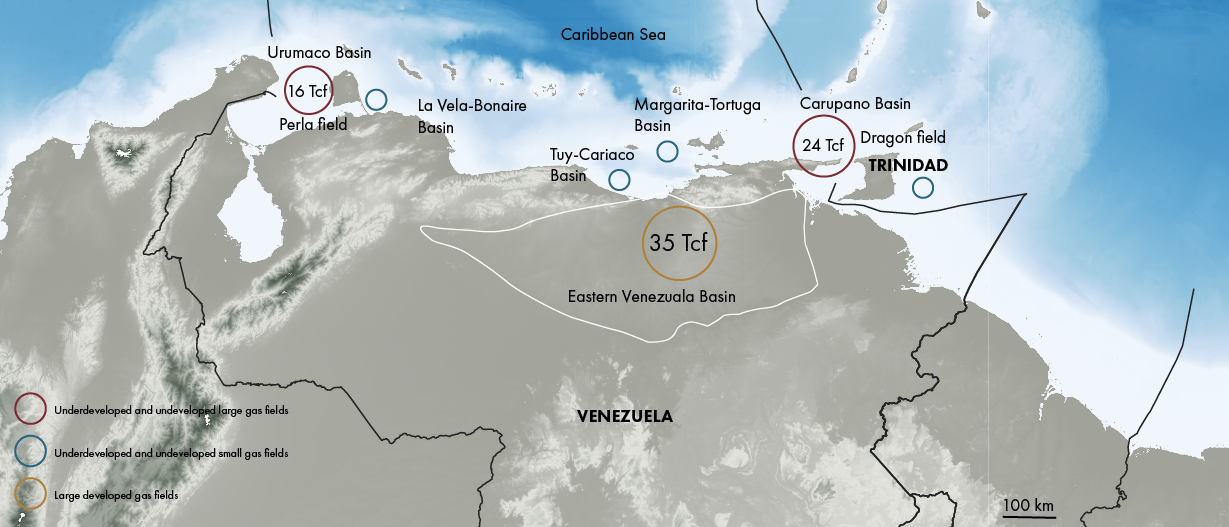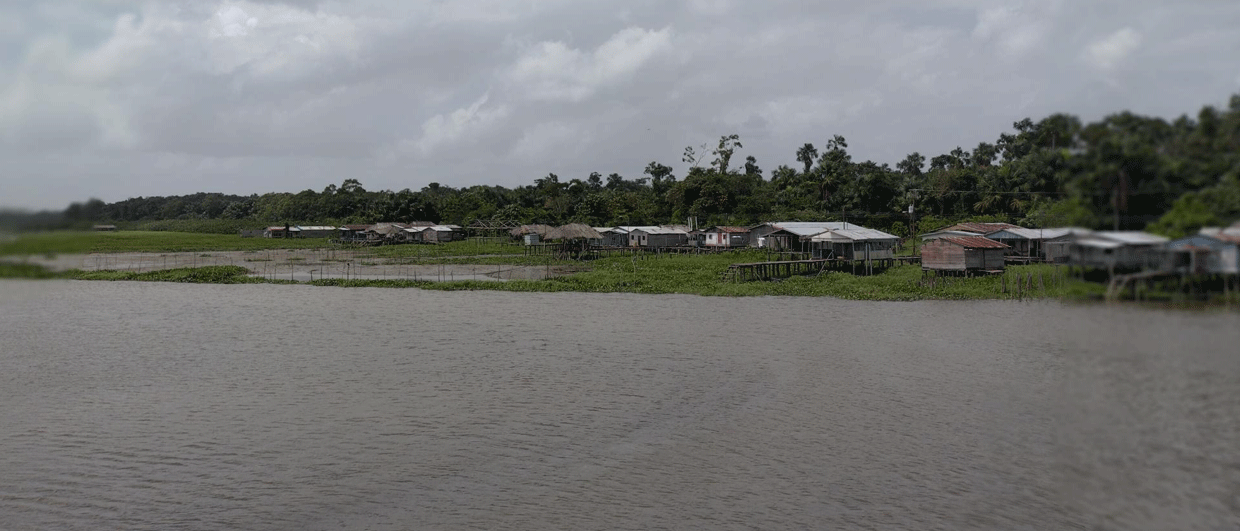With 202 Tcf, Venezuela accounts for 73 % of South America’s total natural gas resources, but gas production has been minimal in localized domestic markets due to limited existing infrastructure and geopolitical uncertainty. Thus, giant gas discoveries offshore Venezuela are undeveloped due to a lack of investment, while onshore oil production in the Eastern Venezuelan Basin is accompanied by massive natural gas flaring estimated at around 706 Bcf per year in 2022.
Offshore Resources
The Caribbean margin of Venezuela has both discovered gas accumulations and the potential for new exploration. The total OGIP (Original Gas in Place) discovered to date amounts to 44.8 Tcf in the Caribbean waters from the Carupano (24.2 Tcf) and Urumaco (16.6 Tcf) basins.
A gas contract was recently signed for the Dragón field (6.5 Tcf OGIP) to be developed by Shell PLC and the Trinidad and Tobago state firm National Gas Company Ltd to produce 100 MMCF per day and to contribute to the Trinidad and Tobago Domestic demand.
Other Caribbean basins of Venezuela such as Blanquilla, Tortuga Tuy Cariaco, Gulf of Paria, and Orinoco Offshore, are in the immature to early mature exploratory stage and hold additional potential not only in the identified and tested plays but also in new exploration concepts.
Supporting SDG and Energy Transition
With abundant offshore and onshore gas resources, Venezuela has the potential to become a substantial player in the global gas market. Onshore projects serving the domestic market should be attractive to small players, while the LNG potential of large gas discoveries offshore should attract the supermajor IOCs. Realization of the full potential of Venezuela’s gas resources requires strategic planning for both discovered and yet-to-find resources and an understanding of their use in domestic and international energy markets.
Gas has been recognized internally and externally as an essential element in Venezuela’s economic recovery and energy transition; for example, the European Union has proposed boosting Venezuela’s natural gas production with funds from “Global Gateway”, which will become available if the government guarantees fair elections in July 2024.
Diverting the large volumes of associated gas flared daily in Eastern Venezuela toward gas power generation aimed at minimizing carbon pollution may open business opportunities and provide incentives for changes in the current working practices. For example, as electricity generation from hydropower in the south of Venezuela has declined and increased in relative cost due to aging power-grid infrastructure, gas generation has become an increasingly attractive option for the electrification of towns and villages throughout Eastern Venezuela.
In addition to utilizing currently-flared gas, current production could also be used for power generation in energy-poor regions. For example, only two wells of the 16.6 Tcf NW Venezuelan offshore Caribbean Perla gas field producing 130 MMcf per day (where 1 MMcf per day generates 5 MW) could cover the power demand of the entire Zulia State. This is eminently achievable, as the development plan for the field, operated by CARDON IV, a 50:50 joint venture between ENI and Repsol, has fulfilled phases I and IIreaching 450 MMCF per day.
Diversifying sources
As global energy markets evolve, diversifying gas supply sources becomes increasingly crucial. Venezuela’s sizeable offshore gas resources, proximity to major markets, and industrial know-how can make the country a major gas player in the near future, including large-scale LNG developments in the eastern and Caribbean basins.



